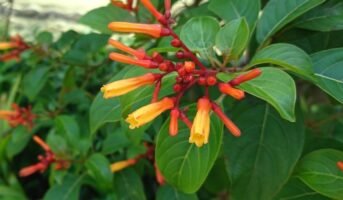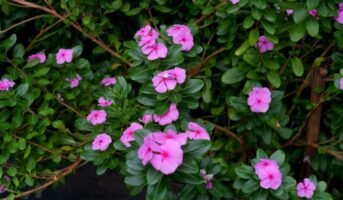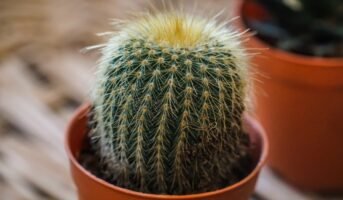The common name for this hardy, epiphytic succulent is Thanksgiving cactus because of its eye-catching wintertime blooms, which often occur around Thanksgiving. It is also referred to by numerous other common names and occasionally mistaken for the actual Christmas Cactus (Schlumbergera x buckleyi).
Unlike the flowers on Schlumbergera x buckleyi, the flowers on this cactus stand upright. Despite the term “cactus” in their name, these plants prefer a humid climate, similar to their native Brazilian rainforests, rather than the hot desert settings in which other cactuses thrive.

Source: Pinterest
Schlumbergera truncata: Facts
| Common Names | Thanksgiving Cactus, Holiday Cactus |
| Weather | Winter Dormant |
| Sunlight | Partial Sunlight |
| Family | Cactaceae |
| Native | Brazil |
| Flower | Gold/Yellow
Pink Purple/Lavender Red/Burgundy White |
| Soil Drainage | Good Drainage
Occasionally Dry |
| Life Cycle | Perennial |

Source: Pinterest
Schlumbergera truncata: Is it an indoor plant?
Schlumbergera truncata flourishes indoors. It needs some light shade, so a windowsill is an ideal place for it. It is preferable to grow this succulent in a container that can be taken indoors if you live in a region that experiences temperatures below 30° F (-1.1° C), as it is not cold hardy.
You need not worry if you have pets in your home because this plant does not have any hazardous effects.
Schlumbergera truncata: How to grow?
Through cuttings
Use a sterilised, sharp knife or pair of scissors to grow Schlumbergera truncata from cuttings. Cut a two- or three-segment part of the main plant, let it callous for a few days, and then plant it in well-draining soil. When the soil is fully dry, add water.
Repotting
In contrast to other cacti, this plant can contentedly remain root-bound in the same pot for a number of years.
Flowering
Place your Thanksgiving cactus in a location with good humidity, light, and more than 12 hours of darkness to let it bloom. This will promote the development of bloom buds, after which your cactus can be exposed to more light.
Schlumbergera truncata: Maintenance
The popularity of Schlumbergera truncata is partly attributable to how simple it is to maintain. New succulent owners frequently skip a few important measures, which can prevent their plant from thriving as well as it could.
Watering
Use the “soak and dry” strategy and give the soil time to fully dry out in between waterings.
Soil requirements
It’s crucial to change the Schlumbergera truncata’s original soil, just like you would with any other succulent. This plant is typically planted in nursery soil along with other plants, although it requires soil that drains well.
Temperature
Place it in a warm area (57 to 72 degrees Fahrenheit) with high humidity and strong light in the winter. Plant it in a good, draining, succulent potting mix. It needs some shade in the summer, or the leaves will turn yellow.
Schlumbergera truncata: Uses
Schlumbergera truncata is grown as an epiphyte or in rock gardens in its native region. It is a popular winter-flowering houseplant that can be used in almost any indoor setting. This plant can be grown in baskets or pots for brightly lit window sills in cooler climates. It is not only easy to care for, but it also spreads easily, making it an excellent candidate for holiday gift-giving.
FAQs
What is the life expectancy of Schlumbergera truncata?
It's a blooming succulent that requires little maintenance, produces lovely blooms, and, with the right care, can last up to 100 years.
Where should a Christmas cactus be placed?
Making sure the plant is in the proper area and only watering when the soil mixture is dry are the keys to maintaining a healthy plant. The optimum conditions for holiday cacti growth are partial shade, such as an east or west-facing window, and temperatures between 70° and 80°F.
Housing News Desk is the news desk of leading online real estate portal, Housing.com. Housing News Desk focuses on a variety of topics such as real estate laws, taxes, current news, property trends, home loans, rentals, décor, green homes, home improvement, etc. The main objective of the news desk, is to cover the real estate sector from the perspective of providing information that is useful to the end-user.
Facebook: https://www.facebook.com/housing.com/
Twitter: https://twitter.com/Housing
Email: [email protected]











